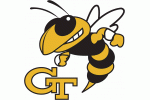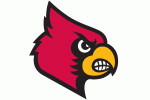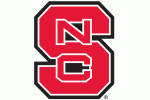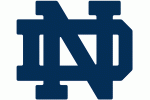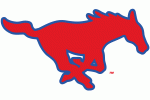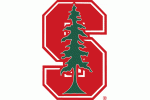Danny Manning led Tulsa to the NCAA Tournament in just his second season with the team. How did the team improve? I looked at the numbers to find out.
 Danny Manning was a national champion and two-time All-American at Kansas, played for fifteen seasons in the NBA, spent four seasons as a director of student athlete development/team manager at Kansas, another six seasons as an assistant coach at Kansas, but was only a head coach for two seasons at Tulsa prior to accepting the head coaching job at Wake Forest in April of 2014.
Danny Manning was a national champion and two-time All-American at Kansas, played for fifteen seasons in the NBA, spent four seasons as a director of student athlete development/team manager at Kansas, another six seasons as an assistant coach at Kansas, but was only a head coach for two seasons at Tulsa prior to accepting the head coaching job at Wake Forest in April of 2014.
Still, Manning demonstrated in his two years at Tulsa that he can develop young players and achieve considerable growth in a short period of time. In just his second season at Tulsa, the Golden Hurricane won the Conference USA Tournament and Manning led the team to its first NCAA Tournament appearance in more than a decade. How did Manning do it? Let's examine the numbers.
*In the delta column in the chart below, please note that all + signs correspond with good (positive) trends. i.e., if offensive turnover % decreases, then I use the + symbol.
| Danny Manning - Tulsa | Year One | Year Two | Delta |
| Wins | 17 | 21 | +4 |
| Losses | 16 | 13 | +3 |
| Ken Pom Ranking | 178 | 73 | +105 |
| Experience | 1.21 (303) | 1.33 (295) | +.12 |
| Offensive Efficiency | 97.9 | 104.7 | +6.8 |
| eFG% | 48.6% | 49.2% | +0.6% |
| TO% | 21.7% | 16.8% | +4.9% |
| OR% | 30.3% | 30.2% | -0.1% |
| Free Throw Rate | 43.6 | 47.1 | +3.5 |
| Defensive Efficiency | 99.4 | 96.3 | +3.1 |
| eFG% | 47.8% | 46.4% | +1.4% |
| TO% | 18.9% | 20.3% | +1.4% |
| DR% | 70.2% | 70.4% | +0.2% |
| Free Throw Rate | 41.3 | 47.5 | -6.2 |
Year One
Manning's first Tulsa team was a very young one that struggled with turnovers. On the opposite end, however, they failed to force many turnovers. They were good rebounding teams and also good at getting to the charity stripe. Unfortunately they had a difficult time converting once they got there. That team should sound pretty familiar to Wake Forest fans, as they were essentially the Conference USA version of Manning's first team at Wake Forest. The main difference being that this year's Wake team was a better shooting team thanks in large part to Manning's late recruiting efforts. What happened in year two?
Year Two
The most noticeable improvement from Manning's first season is that Tulsa managed to increase its offensive efficiency by 6.8 points/100 possessions. The Golden Hurricane did this by slightly improving eFG% and doing a better job of getting to the foul line, but the most dramatic improvement came from their reduction of turnovers. They decreased their turnover percentage by nearly 5%. Given the pace they play, that's more than three turnovers per contest. Those are three possession, where instead of a turnover that could directly lead to points for the other team, Tulsa was at least getting a shot attempt. In addition to shot attempts, they also held steady as an offensive rebounding team, and that led to more second-chance opportunities throughout the season.
Manning prides himself on aggressive man-to-man defense, and he could take a lot of pride in this team. His team went from 137th in defensive efficiency to 30th. Keep in mind that those efficiency numbers are adjusted for competition, so it's not artificially inflated because of the conference Tulsa was in. A key driver of this leap came as a result of improved FG% defense. The team allowed opponents to make just 43.2% of field goal attempts inside the three point line, which was 15th nationally. This year Wake Forest allowed opponents to make 51.1% (288th nationally), so there is hope moving forward that Manning will make improvements.
---------------------------------------------------------------------------------------------------------
I don't expect Wake to jump 105 spots in Ken Pom next season, though if we did I would be doing cartwheels all season. You could see Wake's offense steadily improve throughout the season as the players began to learn the system and freshmen began to gain more confidence. You also saw Codi Miller-McIntyre blossom into a legitimate All-ACC player. We can talk specifics later, but it makes sense that a team who returns nearly all of its rotation players plus adds a top 20 recruiting class will get noticeably better. The defensive rotations should be faster, which should lead to more forced turnovers, and should lead to more contested shots. Manning has already made one big jump in his head coaching career, let's hope he can do it again.







